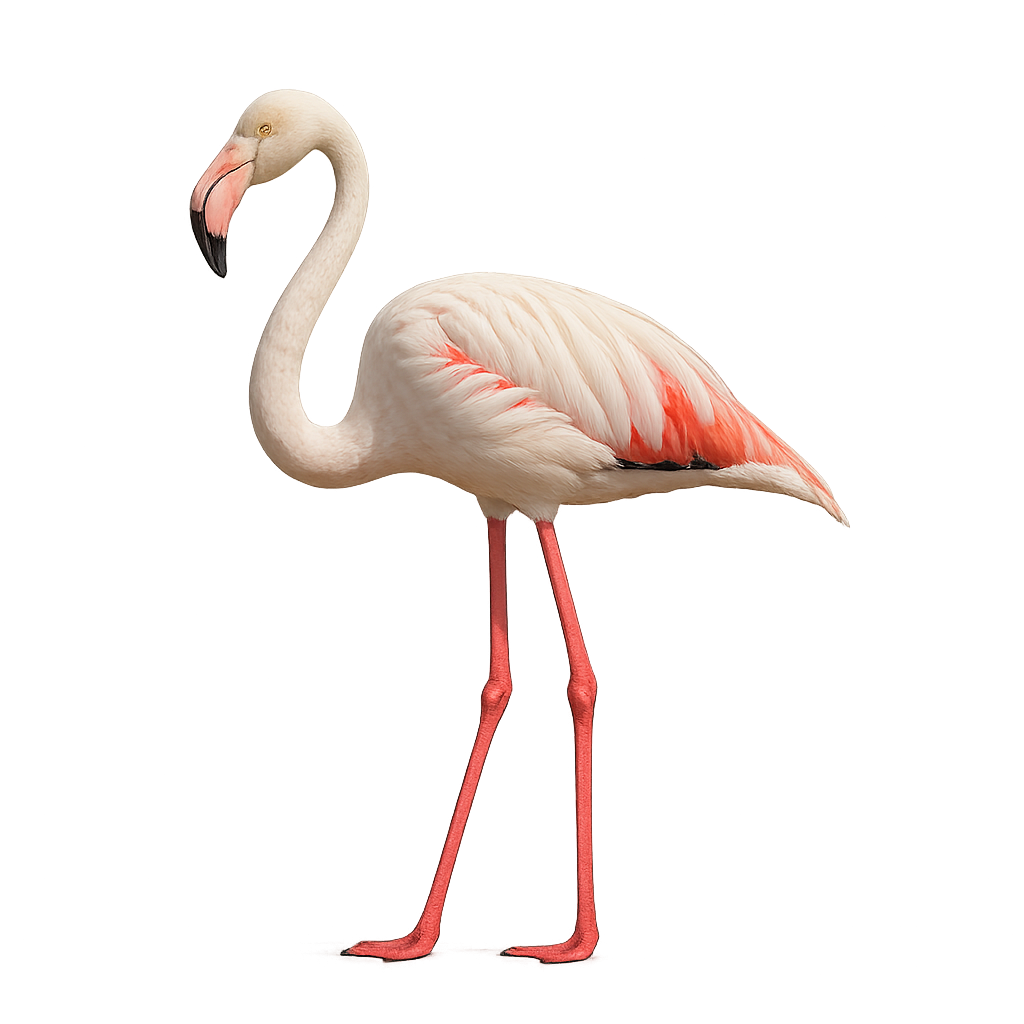Your wildlife photography guide.
Explore the greater flamingo in detail, study its behavior, prepare your shots.
Where to observe and photograph the greater flamingo in the wild
Learn where and when to spot the greater flamingo in the wild, how to identify the species based on distinctive features, and what natural environments it inhabits. The WildlifePhotographer app offers tailored photography tips that reflect the greater flamingo’s behavior, helping you capture better wildlife images. Explore the full species profile for key information including description, habitat, active periods, and approach techniques.
Greater Flamingo
Scientific name: Phoenicopterus roseus

IUCN Status: Near Threatened
Family: PHOENICOPTERIDAE
Group: Birds
Sensitivity to human approach: Suspicious
Minimum approach distance: 40 m
Courtship display: March to May
Incubation: 27-31 jours
Hatchings: April to June
Habitat:
Wetlands and lagoons
Activity period :
Primarily active during the day, with peak activity in the morning and late afternoon.
Identification and description:
The Greater Flamingo is a large bird with distinctive plumage, easily recognizable by its vivid colors and graceful silhouette. It stands about 1.4 to 1.7 meters tall and weighs between 2.5 and 4 kg. Its plumage is primarily pale pink, with more intense shades on the wings, and its long legs and neck give it a majestic posture. The Flamingo's beak is curved downward, allowing it to filter water and feed primarily on plankton, small shrimp, and algae. This bird primarily inhabits wetlands, saline lagoons, and salt marshes, where it often gathers in large colonies. Flamingos feed by dipping their heads into the water while walking in shallow waters, using their beaks to filter food. While the species is not threatened, it faces risks related to habitat loss, pollution, and human disturbance.
Recommended lens:
300 mm – adjust based on distance, desired framing (portrait or habitat), and approach conditions.
Photography tips:
Use a telephoto lens to photograph from a distance, respecting the discreet and gregarious nature of the species.
Photograph early in the morning or late in the afternoon, when the soft light enhances the pink hues of its plumage, the reflections on the water, and the graceful silhouettes of the flock.
Look for it in wetlands such as lagoons, salt marshes, shallow lakes, and mudflats rich in microorganisms. The greater flamingo feeds by filtering water and mud, extracting small invertebrates, crustaceans, and algae, which contribute to its pink coloration.
Be patient and discreet. Avoid sudden movements and noise, and always keep a respectful distance to avoid disturbing natural behavior, especially during courtship displays or breeding season.
The Greater Flamingo is classified as Least Concern by the IUCN. Although widespread, protecting the peace of its wetland habitats—highly sensitive to human disturbance—is essential to support breeding colonies.
The WildlifePhotographer App is coming soon!
Be the first to explore the best nature spots, track rutting seasons, log your observations, and observe more wildlife.
Already 1 450 wildlife lovers subscribed worldwide

